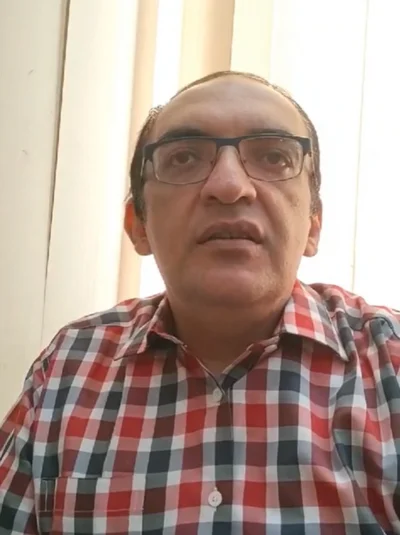Implementing Odoo ERP is a transformative journey that requires meticulous planning, strategic execution, and continuous support. This guide provides an in-depth look into each phase of the Odoo implementation process, ensuring that businesses can leverage the full potential of this versatile platform.
What Is Odoo ERP Implementation?
Odoo ERP implementation involves the deployment of Odoo’s modular applications to streamline and automate various business processes. This includes configuring modules like CRM, Sales, Inventory, Accounting, HR, and Manufacturing to align with an organization’s specific needs.
Related Reading: The Ultimate Checklist for a Smooth Odoo Implementation
Why Odoo Requires a Structured Rollout

A structured rollout is crucial for the success of an Odoo implementation. Without a clear plan, businesses risk misalignment between the ERP system and their operational processes, leading to inefficiencies and potential failures. A methodical approach ensures that each phase of the implementation is executed effectively, minimizing risks and maximizing ROI.
Odoo Implementation Process: Step-by-Step

Related Reading: Top 7 Essential Steps For A Successful Odoo ERP Implementation
1. Discovery & Planning

Objective: Define business goals, success metrics, and scope.
Key Actions:
- Conduct stakeholder interviews
- Identify critical workflows and pain points
- Create a high-level roadmap
2. Requirement Gathering

Objective: Document detailed functional and technical requirements.
Deliverables:
- Business requirement document (BRD)
- Process mapping diagrams
- App/module selection
3. System Design & Prototyping

Objective: Create wireframes, test environments, and mock-ups.
Tools:
- Odoo Studio for visual customization
- BPMN tools for workflow mapping
4. Development & Configuration

Objective: Customize modules, build automation, and configure workflows.
Tasks:
- Custom reports
- Role-based permissions
- Third-party integrations (e.g., Shopify, Stripe)
5. Data Migration

Objective: Transfer historical and master data into Odoo safely.
Sources:
- Excel sheets, legacy ERPs, and CRMs
Best Practices:
- Clean data before migration
- Validate with sample datasets
6. Testing (UAT)

Objective: Ensure that the system works as intended for users.
Includes:
- Functional testing
- Security testing
- User Acceptance Testing (UAT) feedback loop
7. Training & Documentation

Objective: Equip users with skills and SOPs for daily operations.
Types:
- Admin training
- End-user training
- Custom manuals and how-to videos
8. Go-Live & Rollout

Objective: Launch Odoo in a live production environment.
Steps:
- Final data upload
- The system freezes and switches
- Hypercare period (first 7–14 days)
9. Post-Go-Live Support

Objective: Ensure system stability, monitor KPIs, and support change management.
Support May Include:
- Bug fixes
- New feature rollouts
- Performance tuning
Odoo Implementation Timeline

Business Size | Estimated Duration |
Small Business (1–2 apps) | 4–6 weeks |
Medium Business (5–8 apps) | 8–12 weeks |
Large Enterprise (Full suite) | 4–6 months |
Related Reading: How long does Odoo implementation take
Key Roles in an Odoo Project

Role | Responsibility |
Project Manager | Timeline, communication, and team coordination |
Functional Consultant | Requirement mapping and training |
Technical Consultant | Development, customization, and integrations |
QA Tester | UAT, validation, defect logging |
Data Migration Lead | Cleansing and uploading data |
Developer | Building and customizing modules |
UI/UX Designer | Designing user interfaces and experiences |
DevOps Engineer | Managing deployment and infrastructure |
Common Implementation Pitfalls to Avoid

- Starting without a defined scope
- Poor data quality during migration
- Inadequate user training
- Ignoring change management
- Choosing vendors based solely on price
- Attempting to implement all modules at once
Conclusion
Odoo remains one of the most powerful and adaptable ERP platforms in 2025. Whether you’re a startup founder, financial leader, or IT executive, a successful Odoo deployment hinges on strategic planning, realistic budgeting, and the right Odoo implementation partner.
For personalized assistance with your Odoo implementation, feel free to contact us at SDLC CORP or schedule a free consultation.
FAQ's
What Are The Key Steps In The Odoo Implementation Process?
The Odoo implementation process typically follows these key steps:
- Requirement Analysis – Understanding business needs and defining project scope.
- Planning & Configuration – Setting up the system based on business workflows.
- Customization & Development – Developing custom modules or modifying existing features.
- Data Migration – Transferring data from old systems to Odoo.
- Testing & Quality Assurance – Ensuring the system works as expected.
- User Training – Training employees to use Odoo efficiently.
- Go-Live & Support – Deploying the system and providing post-implementation support.
How Long Does The Odoo Implementation Process Take?
The implementation timeline varies depending on project complexity.
- Small Businesses: 2-4 weeks for basic setup.
- Medium Enterprises: 2-3 months for moderate customization.
- Large Enterprises: 6+ months for extensive customization and integration.
What Are The Common Challenges Faced During Odoo Implementation?
Some common challenges include:
- Poor requirement analysis leading to scope creep.
- Lack of user adoption due to insufficient training.
- Data migration issues from legacy systems.
- Unexpected customization costs.
- Delayed project timelines due to complex integrations.
How Much Does It Cost To Implement Odoo?
The cost of Odoo implementation depends on factors such as customization, user licenses, and support services.
- Basic Implementation: $3,000 – $10,000
- Moderate Customization: $10,000 – $30,000
- Enterprise-Level Implementation: $50,000+
Costs may vary based on the number of users, required modules, and integration complexity.
Why Should Businesses Choose Odoo Over Other ERP Systems?
Businesses should consider Odoo over other ERP systems for several key reasons:
- Modular Approach – Businesses can implement only the needed modules.
- Cost-Effectiveness – More affordable than traditional ERP solutions.
- Flexibility & Customization – Highly customizable based on business needs.
- User-Friendly Interface – Intuitive design for easy adoption.
- Community & Enterprise Versions – Options for open-source or paid versions.
















